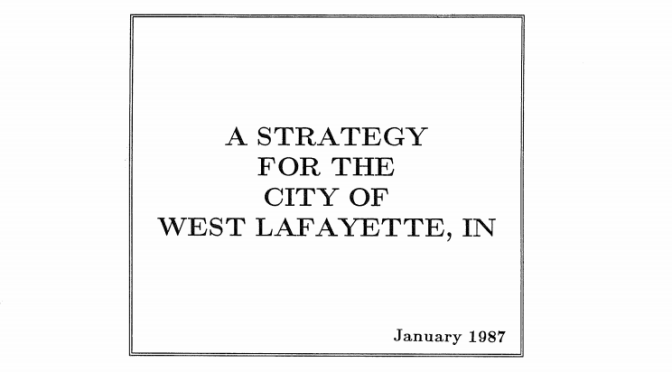It is interesting. Just earlier this week West Lafayette was named one of the easiest cities to get around for seniors:
Katie Moreau, communications director for AARP Indiana, said West Lafayette was chosen due to its extensive public transportation, close access to medical care and proximity to Purdue University. She said the elderly population has a combination of unique needs that can be difficult to meet if mobility is limited and the residents cannot drive.
She said in West Lafayette, public transportation is abundant and social opportunities for the elderly abound thanks to Purdue, which offers lectures, classes and more.
Now, according to a group of Big Ten ESPN Experts (their term, not mine), surmised that West Lafayette ranks the worst (14th) out of the entire Big Ten:
West Lafayette, Ind. It’s one of the smallest towns on this list at under 50,000 residents. There isn’t a whole lot to do, both indoors or out other than the Lafayette Brewery and the Wabash River. If you like brick and Greek parties, then this is your place. Otherwise, continue down I-65 to Indy or Chi-town. Purdue’s home city got seven last-place votes.
I find it curious that the students included in the WLFI piece were all shocked by the results. Did only find those who were against the Big Ten Experts’ assessment?
There were some good quotes from Mayor John Dennis in the WLFI piece:
“When you compare the city of West Lafayette to all the other Big Ten school, we’re the smallest. We’ve got 50,000 static citizens, so that is indicative of a relatively small town environment,” said Dennis.
The website says there isn’t a whole lot to do either inside or outside, unless you like brick and Greek parties. It suggests a visit to Indianapolis or Chicago.
But Dennis thinks some opinions will change with the State Street Project.
“We’re going to bring in more development, to expand accessibility to some of our businesses, and generally improve the overall environment,” said Dennis.
[…]
Dennis said when it comes to quality of life here in West Lafayette — that deserves a top ranking.
However, does the City of West Lafayette earn a top ranking when it comes to quality of life?
I am not sure where Mayor Dennis came up with the 50,000 static citizens in West Lafayette. The population stated in the recent annexation and redistricting places us at 41,950. This population total also includes a significant amount of students living in Districts 1, 2, 3, 6. I don’t think we can call students static residents since in most cases, they meet the criteria for temporary residents:
As one commenter, Stephen Jack, pointed out in the Indy Star comments:
 If students (and residents) do not have reasons to stay after their purpose for being here (education), they leave Tippecanoe County if not Indiana entirely. One could assume that the same reasons the ESPN Big Ten Experts found West Lafayette uninspiring are the same reasons why we have a highly transient population.
If students (and residents) do not have reasons to stay after their purpose for being here (education), they leave Tippecanoe County if not Indiana entirely. One could assume that the same reasons the ESPN Big Ten Experts found West Lafayette uninspiring are the same reasons why we have a highly transient population.
Student (and human capital) flight has been occurring for decades. Those same shocked students included in the WLFI piece will, most likely, finish their education, graduate, and then move to another city, probably outside of Indiana. One recent change in the history of West Lafayette is the annexation of Purdue and neighboring lands. Now, for their short stay in West Lafayette, students have a seat at the Legislative table with the addition of District 3 in West Lafayette. Through this seat on the City Council, students have increased power and representation on a variety of committees and boards throughout Tippecanoe County.
Mayor Dennis spoke about the upcoming State Street Master Plan/ReState St/State Street Redevelopment Project, where significant transportation changes, along with some new public features, will be added to State St. If executed well, this could change the tone and tenor of the area for decades to come.
One uninspiring change will be the addition of these pedestrian prison bars in The Village area:
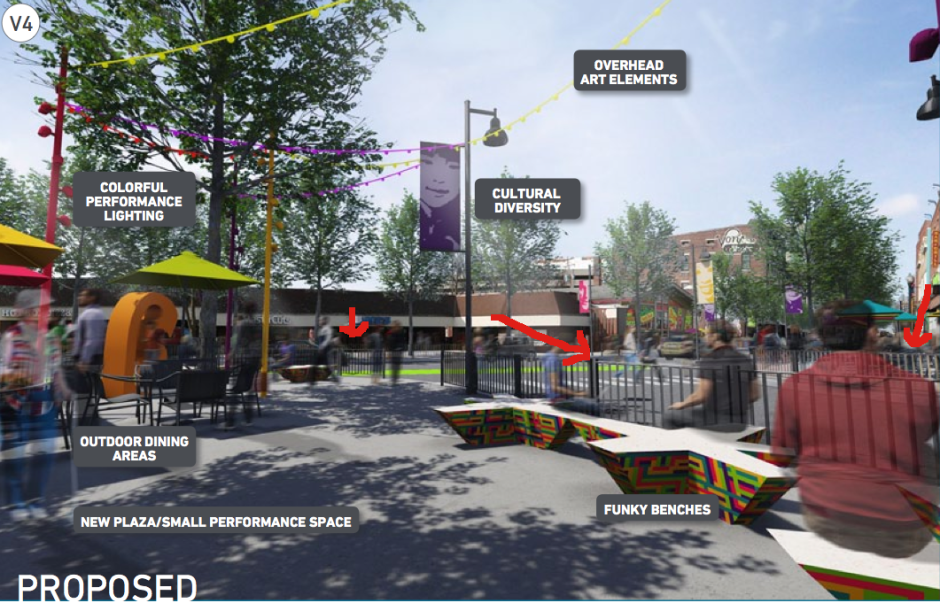 These are being suggested initially to avoid having the orange and white barricades out during game days, but a permanent fence around The Village is not the solution.
These are being suggested initially to avoid having the orange and white barricades out during game days, but a permanent fence around The Village is not the solution.
Besides this horribly insulting addition, what confidence can we have in the future commercial development along this extremely important corridor? If we look at the history of development in West Lafayette, it will be a majority of chain and franchise establishments that cater to the lowest common denominator of desire in our community: the transient student population. Once again leaving nothing for the 41,000+ static residents.
If we continue down this path of development, these static residents will turn mobile and leave along with the students.
The Levee was also touted as a game changer for the community in the early 2000s and its impact is not highly regarded nor celebrated in the Community. It meets some needs, however, the State St. Redevelopment Project is updating the area to address some initial development blunders:
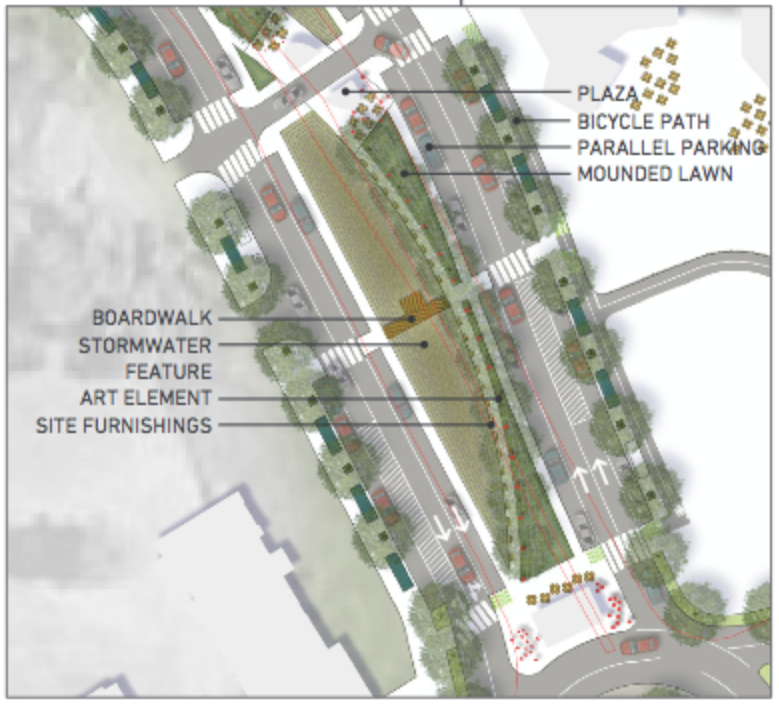 There were also some interesting comments from the WLFI article regarding the Levee:
There were also some interesting comments from the WLFI article regarding the Levee:
MilkAndChocolate:
“But Dennis thinks some opinions will change with the State Street Project.”
Ha! That’s what everyone said about the Levee projects, but that area has flat-lined, and faded, and still offers little more than a theater and some food. The crime statistics don’t help either. I’m sure they’re enough to make people double-think their visits. I’d be curious to see what impact Ferguson, Missouri has had on Saint Louis’ visitor count. I doubt people are flocking to the Saint Louis area.
jonny bakho reply to MilkAndChocolate
The Levee project was ruined when INDOT turned River Road into an 8 Lane pedestrian kill zone. It is unsafe to walk from campus to the Levee. The traffic around campus is unpleasant. Give pedestrians priority around campus and campus town, move the cars out to parking lots and roads on the edge and things will improve. There is no place to eat near the sports complex but McDonalds. The new Baseball/Soccer/Tennis area is only accessible by car. No amenities for miles. This encourages students to drive and makes the campus unpleasant and less safe.
As always, communication is key. So is an active and engaged constituency. Remember, 2015 is a Municipal Election Year. The City Council seats are all contested by two parties, Independent Donnie Spencer is running in the campus district. Mayor Dennis is unopposed.
Take a few moments out of your schedule, make some phone calls to the Mayor’s office (765-775-5103), call your City Councilor Representative, write a Letter to the Editor at the J&C. Share your thoughts. Attend the City Council meeting on May 4th. This is the start of a LONG process.
Politics is a war of attrition.
The only way West Lafayette will transcend the contemptuous view people have of it and become an acclaimed and notable City is if you are a part of the process.
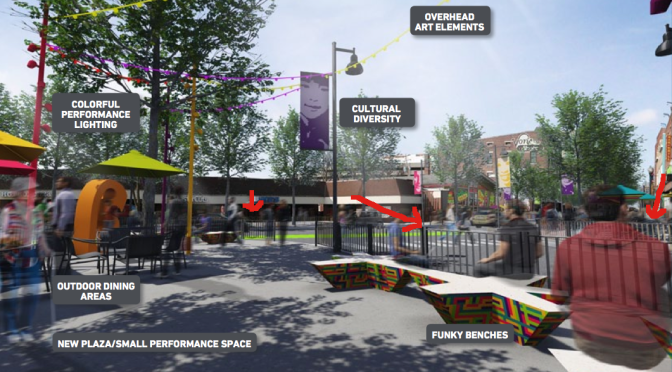
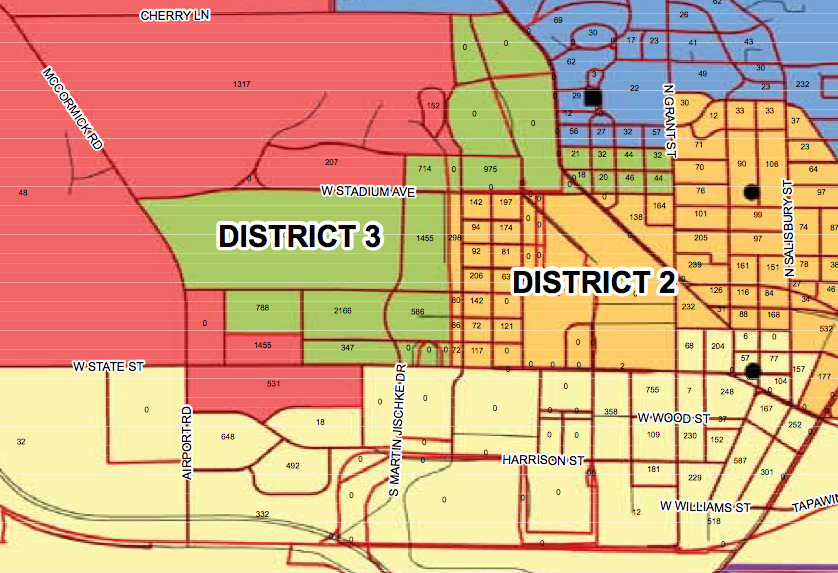
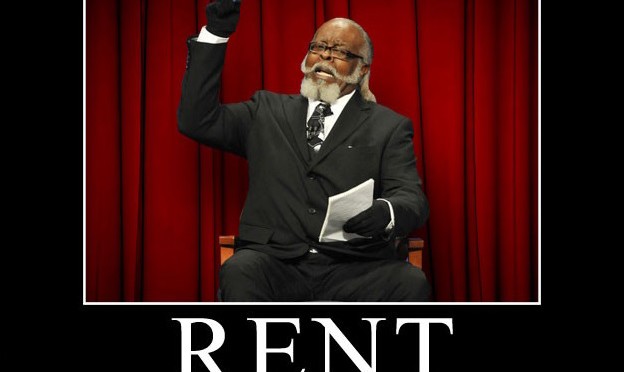
 I have called West Lafayette home since arriving in 2006. I graduated from Purdue in 2011 with degrees in political science and history, and now work in Marketing. I love this city, its people and its culture. Yet I am not content with the status quo.I have been fighting to reduce the cost of living and improve our community since I assumed office in August 2014. Serving the residents of District 1 is the privilege of a lifetime. One that comes with a responsibility to ensure the interests of student residents are balanced against entrenched landlords and the overbearing influence of neighborhood groups.I want us to have more bars, offices, restaurants, and affordable apartments. I want us to maintain a close and responsible relationship with our community. That includes maintaining a relationship with law enforcement that has made our community safe, while also preventing unnecessary non-violent arrests that can damage careers and opportunities for decades after graduation.
I have called West Lafayette home since arriving in 2006. I graduated from Purdue in 2011 with degrees in political science and history, and now work in Marketing. I love this city, its people and its culture. Yet I am not content with the status quo.I have been fighting to reduce the cost of living and improve our community since I assumed office in August 2014. Serving the residents of District 1 is the privilege of a lifetime. One that comes with a responsibility to ensure the interests of student residents are balanced against entrenched landlords and the overbearing influence of neighborhood groups.I want us to have more bars, offices, restaurants, and affordable apartments. I want us to maintain a close and responsible relationship with our community. That includes maintaining a relationship with law enforcement that has made our community safe, while also preventing unnecessary non-violent arrests that can damage careers and opportunities for decades after graduation.
